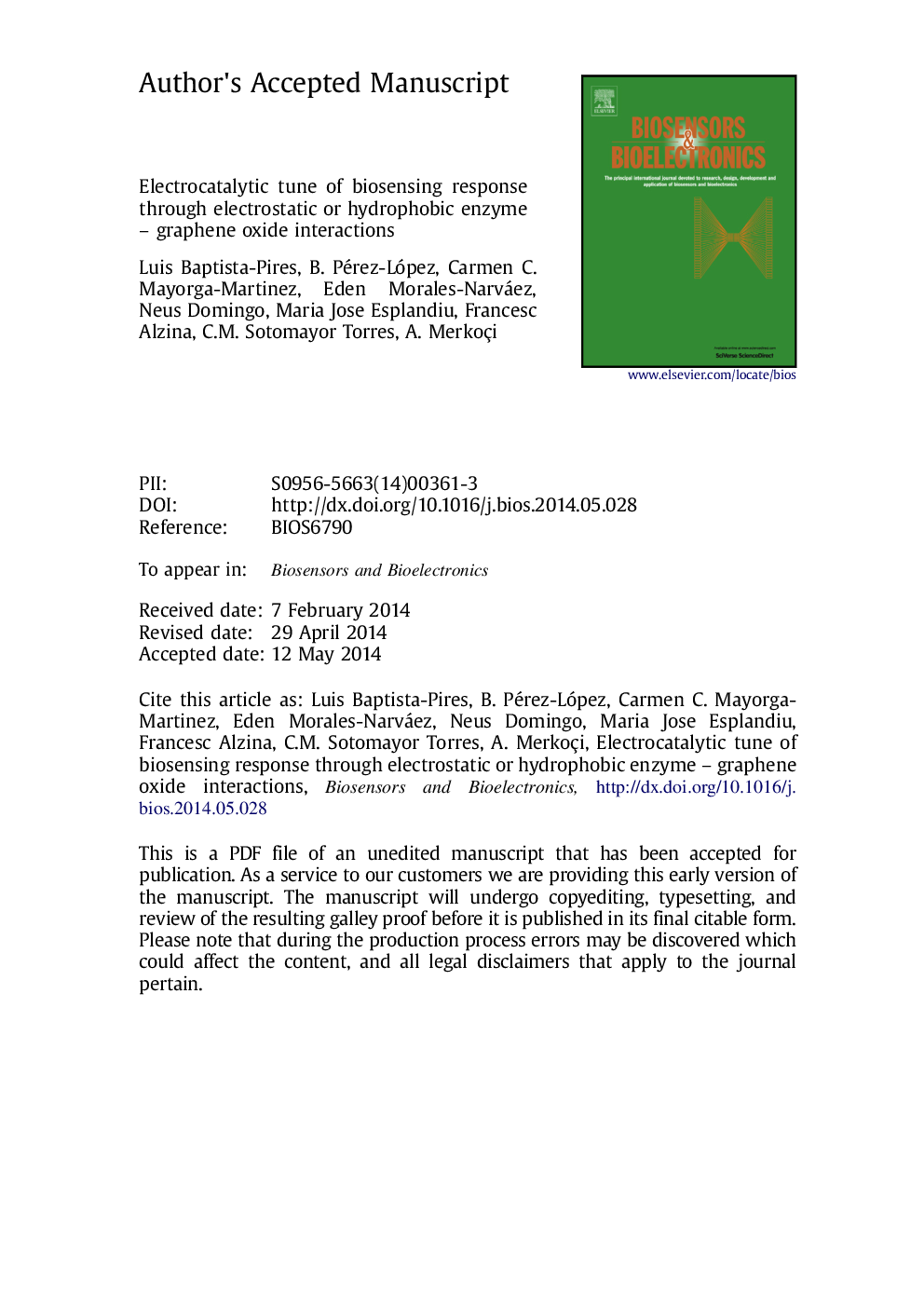| Article ID | Journal | Published Year | Pages | File Type |
|---|---|---|---|---|
| 7233445 | Biosensors and Bioelectronics | 2014 | 25 Pages |
Abstract
The effect of graphene oxidative grades upon the conductivity and hydrophobicity and consequently the influence on an enzymatic biosensing response is presented. The electrochemical responses of reduced graphene oxide (rGO) have been compared with the responses obtained from the oxide form (oGO) and their performances have been accordingly discussed with various evidences obtained by optical techniques. We used tyrosinase enzyme as a proof of concept receptor with interest for phenolic compounds detection through its direct adsorption onto a screen-printed carbon electrode previously modified with oGO or rGO with a carbon-oxygen ratio of 1.07 or 1.53 respectively. Different levels of oGO directly affect the (bio)conjugation properties of the biosensor due to changes at enzyme/graphene oxide interface coming from the various electrostatic or hydrophobic interactions with biomolecules. The developed biosensor was capable of reaching a limit of detection of 0.01Â nM catechol. This tuning capability of the biosensor response can be of interest for building several other biosensors, including immunosensors and DNA sensors for various applications.
Related Topics
Physical Sciences and Engineering
Chemistry
Analytical Chemistry
Authors
Luis Baptista-Pires, Briza Pérez-López, Carmen C. Mayorga-Martinez, Eden Morales-Narváez, Neus Domingo, Maria Jose Esplandiu, Francesc Alzina, Clivia M. Sotomayor- Torres, Arben Merkoçi,
